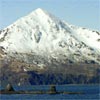Echoes and Reflections Training Goes to Alaska

Echoes and Reflections, a professional teacher development program on the Holocaust, has now expanded to Alaska. In April, middle and high school educators from across the state journeyed to Kodiak High School on Kodiak Island to participate. In addition to those attending in person, others in remote locations joined via video conferencing. In all, 25 Alaskan teachers trained in Echoes and Reflections, which employs visual history testimony from survivors and witnesses, as well as primary source materials, to make this history—and its horror—come alive for students.
USC Shoah Foundation developed the Echoes and Reflections curriculum in partnership with the Anti-Defamation League and Yad Vashem. Deborah Batiste, Echoes and Reflections project director, led the daylong seminar in Alaska—which was organized by LeeAnn Schmelzenbach, a local English literature teacher who met some of the program’s representatives at a convention of the National Council of Teachers of English in Las Vegas.
The resources that you were able to place in our hands are going to help me change the way I teach my students.
“I am so grateful that you were able to come all the way to Alaska to train [us],” says Schmelzenbach. “The resources that you were able to place in our hands are going to help me change the way I teach my students.” In particular, she looks forward to teaching Night, by Elie Wiesel, and being able to help her students visualize what he lived through and draw “connections on a deeper level to enrich their learning and, hopefully, their level of empathy for humanity at large.”
Launched in 2005, the still-growing Echoes and Reflections is a leader in helping U.S. secondary educators deliver accurate and authentic Holocaust education, providing comprehensive professional development and multimedia resources suitable for history/social studies, English/language arts, fine arts, social sciences, religion, and other content areas. More than 18,000 educators have received the training, which features active, collaborative learning, and an array of resources that includes the Shoah Foundation’s Visual History Archive. The program has benefited hundreds of thousands of middle and high school students across the nation.
Like this article? Get our e-newsletter.
Be the first to learn about new articles and personal stories like the one you've just read.